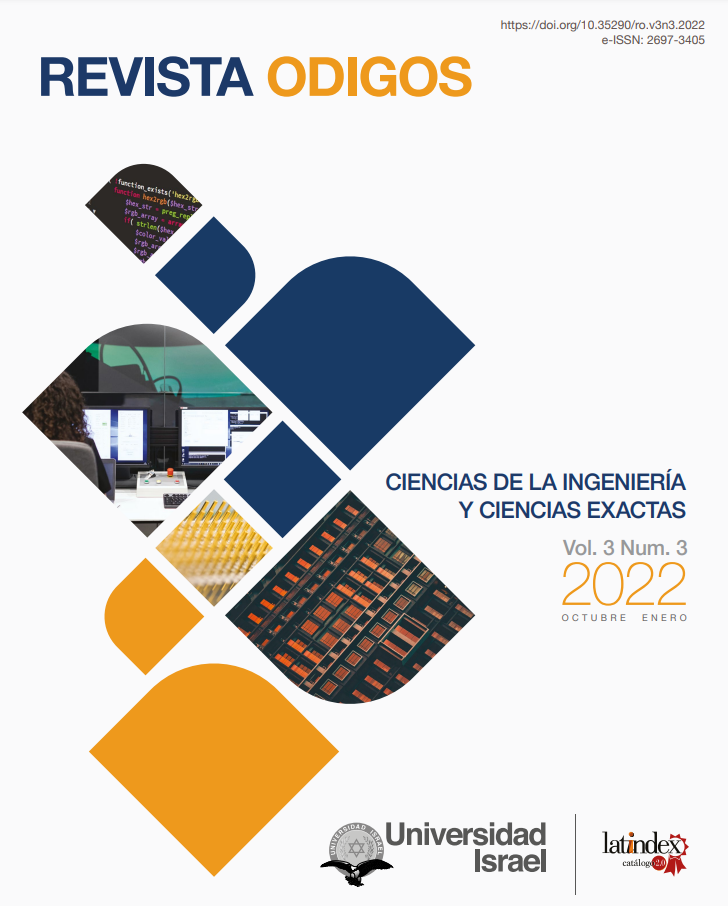The uncanny valley, its execution and how to avoid it in 3D animations
DOI:
https://doi.org/10.35290/ro.v3n3.2022.675Keywords:
robotics, realism, visual representation, digital compositing, animationAbstract
Within 3D animation, design is not as simple as making a good or bad design, there are other factors that influence whether or not the character generates empathy towards the viewer; one of the critical factors that indicates that the design did not meet expectations is whether it falls within the uncanny valley, a phenomenon studied in robotic design but that has spread to 3D animation. Although it is only a theory, it must be considered in order to have the possibility of correcting character designs and make them pleasing to the eye, as well as to look for modern alternatives to create ultra-realistic 3D designs or animations.
Downloads
References
Araujo, D. y Lascurain, I. (2022). Robótica social, la ciencia detrás de la interacción humana.+Ciencia, (28), 19-21. https://revistas.anahuac.mx/masciencia/article/view/1233
Bautista, D. y Martini, S. (2014). ¿Qué hay más allá del Valle Inquietante? Universidad Politécnica de Madrid, 1-7. https://oa.upm.es/25654/
Butler, M. & Joschko, L. (2007). Final Fantasy or The Incredibles Ultra-realistic animation, aesthetic engagement and the uncanny valley. Animation Studies, 3, 55-57.
Cerdán, V. y Padilla, G. (2019). Historia del fake audiovisual: deepfake y la mujer en un imaginario falsificado y perverso. Historia y Comunicación Social, 24(2), 505-520. https://doi.org/10.5209/hics.66293
Frascara, J. (2004). Diseño gráfico para la gente. Comunicaciones de masa y cambio social. Ediciones Infinito.
MacDorman, K., Green, R., & Koch, C. (2009). Too real for comfort? Uncanny responses to computer generated faces. Computers in human Behavior, 25(3), 695-710. https://doi.org/10.1016/j.chb.2008.12.026
Mori, M., MacDorman, K., & Kageki, N .(2012). The Uncanny Valley. IEEE Robotics & Automation Magazine, 19(2), 98-100. https://doi.org/10.1109/MRA.2012.2192811
Pastor, R., y Bonilla, A. (2000). Identidades y cuerpo: el efecto de las normas genéricas. Papeles del Psicólogo, (75), 33-49. https://www.redalyc.org/articulo.oa?id=77807506
Peña, L., y Vásconez, M. (2010). Paso a Paso: Una solución gradualista a la paradoja del sorites, lejos de la indeterminación y del agnosticismo. Bajo Palabra, (5), 399-418. http://hdl.handle.net/10261/37277
Pollick, F. (2009). In Search of the Uncanny Valley. In Daras, P., Mayora, O (Eds.) User Centric Media. Springer. https://doi.org/10.1007/978-3-642-12630-7_8
Sánchez-Moreno, J. (2016). Análisis de la composición digital para la realización de efectos digitales en los casos de The Martian (2015) y Mas Max: Fury Road (2015) [Tesis de maestría, Universitat Politècnica de València] http://hdl.handle.net/10251/71562
Sossa, A. (2011). Análisis desde Michel Foucaulat referentes al cuerpo, la belleza física y el consumo. Polis, Revista Latinoamericana, 10(28), 8-12. http://dx.doi.org/10.4067/S0718-65682011000100026
Velázquez, H. (2009). Transhumanismo, libertad e identidad humana. Thémata. Revista de Filosofía, (41), 577-590. http://institucional.us.es/revistas/themata/41/36velazquez.pdf
Villagrasa, S., Duran, J., y Clares, J. (2009). Animación facial: Cómo (Re)crear el perfecto rostro humano 3D. Memorias CISCI 2009. http://hdl.handle.net/2072/450273
Published
How to Cite
Issue
Section
License
Copyright (c) 2022 Víctor Daniel Maldonado Nolivos

This work is licensed under a Creative Commons Attribution 4.0 International License.
Los autores que participen de los procesos de evaluación y publicación de sus ediciones conservan sus derechos de autor, cediendo a la revista el derecho a la primera publicación, tal como establecen las condiciones de reconocimiento en la licencia Creative Commons Reconocimiento 4.0 Internacional (CC BY), donde los autores autorizan el libre acceso a sus obras, permitiendo que los lectores copien, distribuyan y transmitan por diversos medios, garantizando una amplia difusión del conocimiento científico publicado.
- Toda derivación, a partir de esta obra, deberá citar la fuente y a la primera publicación en esta revista. Se permiten derechos comerciales no lucrativos sobre sus contenidos.
- Los autores pueden realizar otros acuerdos contractuales independientes y adicionales para la distribución no exclusiva de la versión del artículo publicado en esta revista, es decir, podrán incluirlo en un repositorio institucional o publicarlo en un libro, siempre que indiquen claramente que el trabajo se publicó por primera vez en esta revista.
- Se permite y recomienda a los autores compartir su trabajo en línea, con la finalidad de intercambios productivos para una mayor y más rápida citación del trabajo como lo establece los efectos del movimiento ‘Acceso Abierto’.
- No puede aplicar términos legales o medidas tecnológicas que restrinjan legalmente a otros de hacer cualquier cosa que permita la licencia: https://creativecommons.org/licenses/by/4.0/deed.es
- La Revista ODIGOS es financiada completamente de los aportes realizados por nuestra entidad editora: Universidad Tecnológica Israel; por tal motivo, no establece cargos o cobros de ninguna índole a sus autores y colaboradores, así como tampoco genera pagos o remuneraciones de ningún tipo a ellos.
- Se asignará un Digital Object Identifier (DOI) a cada publicación.




